The Vespa motor scooter is an icon of cheap, stylish, Italian motoring. The Vespa 400 minicar, alas, wasn’t destined to become quite so iconic—and it’s not even Italian! Built instead in France by a partner of the Piaggio firm that made the scooters, Ateliers de Constructions de Motos et Accessoires (A.C.M.A.), the Vespa 400 came and went within three short years, while the scooter has retained its basic form, albeit with constant improvement, continuously since the 1940s. Still, the car is a charming exemplar of the postwar microcar boomlet, and if you’ve been looking for a kooky restoration project, perhaps you need look no further than this flame-streaked ’61, offered on eBay out of Rapid City, South Dakota, with no bids yet and a starting salvo of $3,500.
It’s said that one of the main reasons the Vespa was built in France was to avoid competition with Italy’s Fiat 500. The shape certainly bears a resemblance to the pre-Nuova Topolino’s, as well as the 500-based Autobianchi Bianchina; it’s cute, and a little more “car-like” than the Messerschmitt, Heinkel, and Isetta microcars it competed with. The Vespa had room for two within its 66.7-inch wheelbase (overall length is 112″, or the same as a ’68 Chevelle coupe’s wheelbase), and power—14 horses’ worth—came from a 393-cc two-stroke two cylinder engine mounted at the rear.
This Vespa appears to earn its flames with something a bit more modern in its tail. The seller gives no information about the engine—or much of anything else, really, beyond the car’s rarity—but there appears to be a Honda badge stamped into the red housing there. The listing refers to the car as a “Vespa 400 G80,” so my best guess is that this is a 1979-vintage one-cylinder, four-stroke Honda G80 engine. Logical, right?
Inside, we see that the original, tubular-frame seats have been replaced by a pair of indistinct ’60s vinyl buckets. There’s not much else that could go missing from in here, so it’s kind of a shame that the seats are incorrect, preventing this from being a “complete” interior. There are a few other crucial components absent here: the fabric roof is nowhere in evidence, and nor are the bumpers or the header panel that goes below the rear decklid, and there’s no mention that any of these parts are still around and will come with the car. Finding these parts for a car that was built in small numbers over 55 years ago (by a company that closed its doors in 1962) will be no small task. Bearing that in mind, weighed against the seller’s claims of a $20-30,000 value once restored, what do you think of the $3,500 minimum on this minicar?




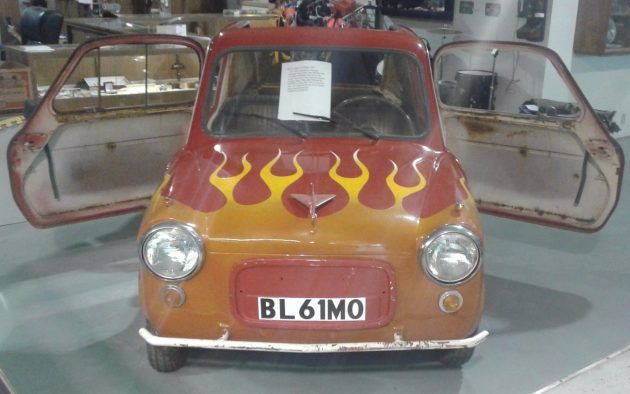

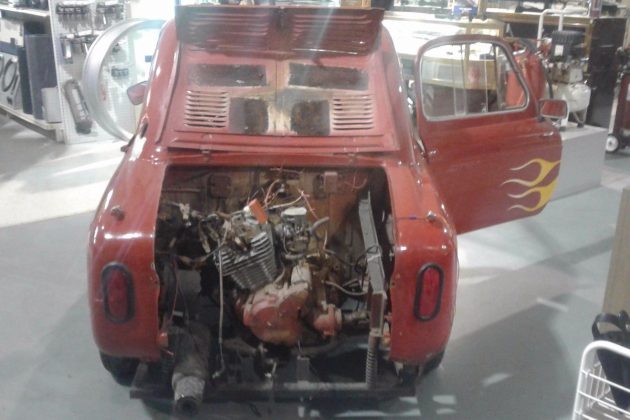


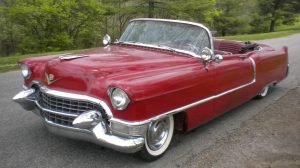
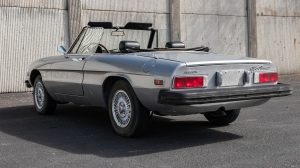
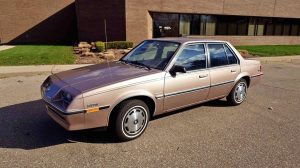


There is so much missing that this car has little value. Not only is the correct engine gone but God only knows what butchery went on to fit that Honda engine with the driveshaft going sideways to the right. A chain drive is just visible in one photo. Yikes!. Is the transaxle even present anymore? It has incorrect floors( no recess for your feet, which would be correct) so either the floors have been replaced with flat sheet metal or are gone completely under the carpet. The fact that the seller mentions nothing about the engine replacement or other issues would have walking away from this.
How many clowns could you get in this thing?
7, according to Krusty the Clown.( 8 including Krusty)
https://www.youtube.com/watch?v=1JsC9Ck-rwU
I’m not sure about the G80 part, but this engine appears to be a 250 or 300cc from a Honda Four Trax atv, hence the driveshaft application. We all know what’s going to happen to this car.
https://assets.hemmings.com/blog/wp-content/uploads//2011/03/NoBigThing_700.jpg
I would put a Corvair drive line in it. And add some wheelie bars.
Too bad, I believe the original engine was a sandwich of two Vespa 150cc scooter engines and they are absurdly easy to work on. (I own three Vespas from that era).
The engine comes out and is on the bench in about 20 minutes and can be completely pulled apart in another 20 minutes. Upgrading the engine involves a new piston, cylinder jug, a larger Dellorto carb and playing with the exhaust for a bit more “zip”.
For a rear engine car, shouldn’t the flames be at the back? Kidding. It looks cool with flames.